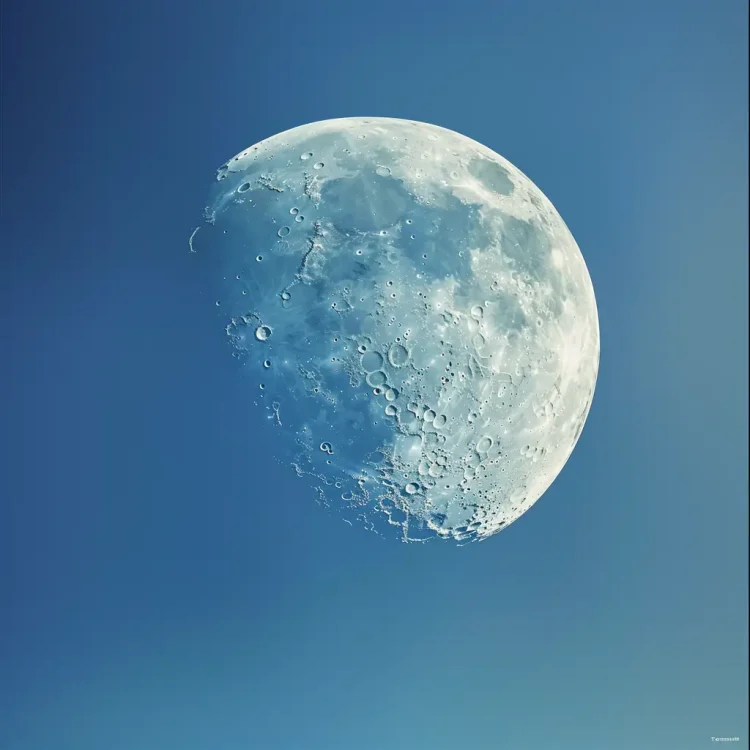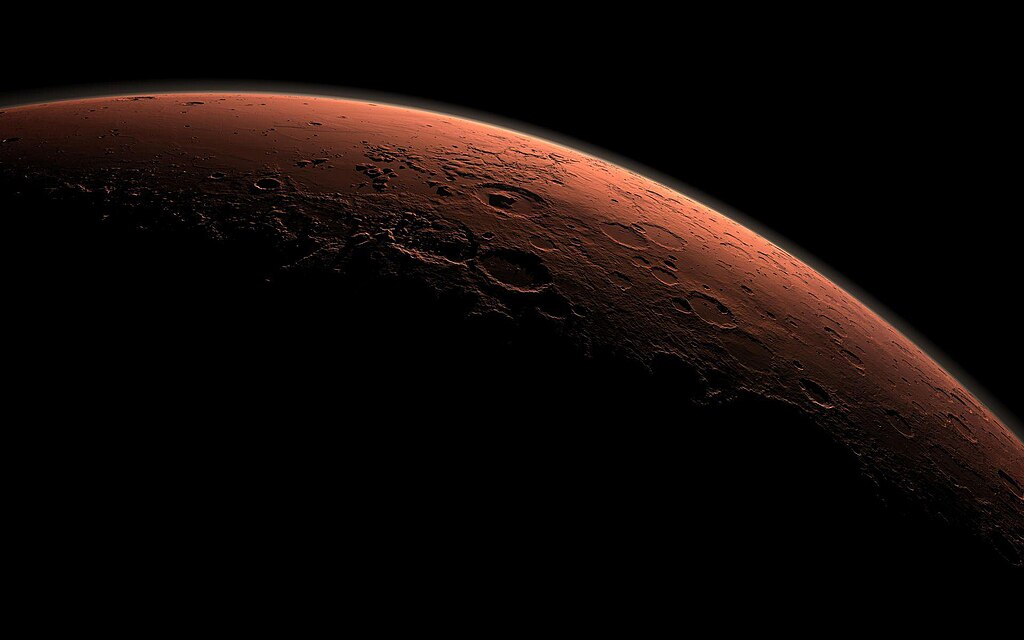The Moon visible during the day is not a rare sight, but it often evokes curiosity and admiration. Although traditionally considered a nocturnal celestial body, the Moon can frequently be seen in the sky during the day. This phenomenon, a combination of the Moon’s orbital dynamics, Earth’s rotation, and interaction with sunlight, represents a stunning astronomical event that challenges many preconceived notions about our natural satellite.
Understanding why and how the Moon can be visible during the day changes our perception of the universe and highlights the complexity of the celestial mechanisms that govern our view of the sky. Through understanding this phenomenon, not only does lunar science deepen, but broader interest in astronomy and the Moon is encouraged. The everyday visibility of the Moon as a daytime phenomenon opens the door for new space and lunar research, sparking questions about other, less visible but equally fascinating natural and astronomical phenomena.
1. Why is the Moon Not Just a Night Companion?
The Moon visible during the day is not an exception but a rule that can be explained by the changes in the Moon’s phases. During its orbital journey around Earth, the Moon goes through various phases that determine how much of its surface is illuminated by the Sun and visible from our perspective. These phases include the new Moon, first quarter, full Moon, and last quarter.
When the Moon is in the first or last quarter, it is high in the sky during daytime hours, making it visible. During the full Moon, the Moon rises in the evening and sets in the morning, meaning it is often visible in the early morning hours. The phenomenon of the Moon’s visibility during the day is also a result of sunlight illuminating the Moon, while Earth’s rotation and its orbital dynamics contribute to its position in the sky. Understanding these astronomical phenomena not only advances lunar science but also reminds us of the continuous interaction between the Sun, Earth, and Moon. All these elements together play a key role in creating one of the most beautiful natural phenomena – the daytime view of our celestial companion. Although the Moon often presents itself as a mysterious companion of the night sky, its presence in the daytime sky reveals an intriguing play of light and shadow that challenges our understanding of its role in the universe.
2. The Dance of Celestial Bodies
“The dance of celestial bodies” not only sounds like a title for a spectacular event but also perfectly describes the orbital dynamics between Earth and the Moon, which allow us to see the Moon during the day. The key to understanding why the Moon is visible during the day lies in its orbit around Earth, which lasts approximately 29.5 days. During this orbital dance performance, the Moon goes through various phases, directly related to its position relative to the Sun and Earth. When the Moon is between the Sun and Earth, it is in the new Moon phase and cannot be seen. However, as the Moon moves away from this position, it becomes increasingly visible during the day. In the first and last quarters, the Moon is positioned so that its illuminated side is partially visible from Earth during daytime hours. This is the result of the specific interaction between the Moon’s phases during the day and the sunlight illuminating the Moon while Earth’s rotation continues to change our viewing perspective.
This orbital dynamic is not only fascinating because it allows us to see the Moon during the day but also because it shows the complexity and synchronization of the natural phenomena that surround us. Investing in space and lunar research enables us to better understand how such astronomical phenomena affect our daily lives.
3. Sun vs. Moon: The Battle of Light
In the intriguing relationship between the Sun and the Moon, one of the key elements determining the Moon’s daytime visibility is the intensity of sunlight. The Sun, as our primary source of light, can overshadow the Moon with its brightness, but this interaction of light reveals some fascinating aspects of astronomy. Sunlight plays a decisive role in how and when we see the Moon during the day. Although the Moon does not produce its own light but reflects the Sun’s, its visibility during the day depends on how much of its surface is illuminated by the Sun’s rays and how that light interacts with Earth’s atmosphere. During the Moon’s phases, especially in the first and last quarters, the Moon is sufficiently illuminated to be visible but not too close to the Sun to be completely overshadowed by its light.
The Sun’s impact on the Moon’s visibility also depends on the observer’s position on Earth and the current Earth’s rotation. When the Moon is high in the sky during the day, its illuminated side is directed towards Earth, allowing us to see it clearly despite the Sun’s glare. This dynamic not only illustrates the orbital connection of the Moon with Earth and the Sun but also highlights the complexity of natural phenomena that allow us to experience the Moon visible during the day.
4. Secrets of Our Atmospheric Shield
Earth’s atmosphere not only protects us from space dangers and regulates our climate but also plays a key role in the magic that allows us to see the Moon during the day. When considering why the Moon is visible during the day, we cannot ignore how the atmosphere affects the light that reaches us from the Moon. The atmosphere acts as a prism that scatters the blue light of the Sun, leaving more red and orange tones during sunrise and sunset. This scattering process allows the Moon, although much less illuminated than the Sun, to remain visible in the sky thanks to the remaining light that interacts less with atmospheric particles.
Additionally, the atmosphere can enhance or diminish the Moon’s visibility through various weather conditions. For example, a clear day with minimal atmospheric disturbances allows for clearer visibility of the Moon, while excessive cloudiness or fog can significantly reduce its visibility. Earth’s atmosphere, like an artist’s palette, scatters blue light and plays with shades of red and orange during sunset, creating a scene in which even the dimly lit Moon remains visible. The role of the atmosphere in the Moon’s visibility also shows how natural and astronomical phenomena interact, creating spectacular scenes that surround us daily. Understanding these interactions not only expands our knowledge of Earth and space but also encourages further research to uncover new secrets of our atmospheric shield.
5. Do We Really See What We See?
When we see the Moon visible during the day, our perception of this celestial phenomenon is not only the result of physical conditions but also complex psychological processes. The way we interpret the visibility of the Moon during the day can be influenced by various psychological and perceptual factors, including optical illusions that can alter our experience of the Moon’s size and color. One feature that affects our perception is known as the Moon illusion, a phenomenon where the Moon appears larger when it is near the horizon than when it is high in the sky. This impression arises from our interaction with surrounding objects on Earth, such as buildings or trees, which lead our brains to misjudge the Moon’s size in relation to these objects. During the day, when lighting conditions are different and the contrasts between the Moon and the blue sky are less pronounced, the perception of its visibility can be further altered.
Understanding these psychological aspects not only helps us understand why the Moon is visible during the day but also explores how our perception can be shaped or even deceived. Such knowledge contributes to the broader field of lunar science and astronomy, providing insight into the complexity of human perception of celestial phenomena.
6. Chronicles of the Moon: What Did Ancient Peoples See?
The Moon visible during the day has fascinated people since ancient times, and its presence in the daytime sky had a significant impact on different cultures throughout history. Ancient peoples often interpreted the appearance of the Moon during the day as an important sign or symbol in their mythological stories and religious beliefs. In many ancient civilizations, the Moon played a central role in calendars and timekeeping, and its daytime visibility served as a key indicator for determining times for agricultural activities, festivals, and rituals. For example, in Egypt, the Moon was associated with the god Thoth, the protector of knowledge and measurement, while in Greece, it was associated with Artemis and Apollo, deities of light and the sun.
In ancient Egypt, the Moon was not only a timekeeper but also a divine symbol, where its daytime visibility was closely linked with Thoth, the god of knowledge and measurement, influencing everything from agriculture to sacred rituals. These historical observations not only illustrate how the Moon during the day was important for daily life but also how celestial bodies in general were crucial in forming the spiritual and cultural identities of peoples. Research into how ancient peoples saw and interpreted the Moon can provide valuable insights into the evolution of astronomical knowledge, as well as the connection of natural and astronomical phenomena with human cultures and religions worldwide.
7. What Do the Stars Tell Us About the Day?
The latest scientific research on the Moon visible during the day reveals fascinating aspects of this celestial phenomenon that continuously intrigues astronomers and sky enthusiasts. Advances in telescope technology and space probes have enabled more detailed study of the interactions between the Moon, the Sun, and Earth, illuminating how and why the Moon remains visible even when the Sun dominates the sky. One of the key findings concerns the orbital dynamics of the Moon and its role in the Moon’s visibility during the day. Analyses of the Moon’s path show how its specific position relative to Earth and the Sun during different phases, especially during the first and last quarters, leads to its illuminated side being visible during daytime hours.
Scientists also investigate the impact of sunlight on the Moon’s perception and how atmospheric conditions on Earth influence our view of it. Additionally, studies on the effect of the Moon’s phases on natural phenomena on Earth, such as tidal oscillations and animal migration patterns, provide further evidence of the Moon’s importance in our daily lives. These contemporary approaches to space and lunar research not only expand our knowledge but also inspire new generations of scientists and researchers to continue uncovering the secrets the Moon still holds.









